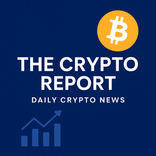U.S. CPI rose a faster-than-expected 0.4% in August; core rate in line

The Crypto Report
Daily crypto news
Navigating Economic Crosscurrents: What Stubborn Inflation and a Cooling Job Market Mean for You
Imagine steering a ship through a storm where the compass offers conflicting readings. That's the feeling many are experiencing as recent economic data presents a nuanced, sometimes contradictory, picture. Understanding these dynamics is crucial for investors, consumers, and anyone navigating today's financial landscape. Fresh reports on U.S. inflation and jobless claims highlight this tension, signaling a complex path ahead for economic policy and personal finance alike.
Inflation's Persistent Grip: A Closer Look at the CPI
The latest Consumer Price Index (CPI) for August indicated that inflation remains a significant factor. Headline CPI rose by 0.4%, slightly exceeding the 0.3% forecast and July's 0.2% increase. Year-over-year, CPI registered 2.9%, aligning with expectations.
Core Inflation Holds Steady
Even when excluding the often-volatile categories of food and energy, core CPI climbed 0.3% in August, matching both forecasts and July's figure. This steady rise underscores that inflationary pressures aren't solely driven by external shocks but are more broadly embedded in the economy. For individuals, this means continued vigilance over purchasing power and household budgets.
The Shifting Sands of Employment: Rising Jobless Claims
Adding another layer to this economic puzzle, the weekly Initial Jobless Claims report revealed a notable uptick. Claims rose sharply to 263,000, significantly worse than the expected 235,000 and the previous week's 236,000. This increase points to a tangible weakening in the employment market.
What a Cooling Labor Market Means
A significant rise in jobless claims suggests that businesses may be slowing hiring or initiating layoffs. For the average person, a weakening job market can impact job security, wage growth, and overall consumer confidence. It’s a key indicator of potential economic slowdowns that can influence everything from real estate to investment decisions.
The Fed's Balancing Act: Rates and Market Reactions
These two critical reports—stubborn inflation and a deteriorating job market—place the Federal Reserve in a precarious position. The central bank must weigh controlling inflation against the risk of stifling economic growth. Prior to the data release, markets had largely priced in a 92% chance of a 25 basis point rate cut at the upcoming Fed meeting. While the hotter-than-expected CPI might temper enthusiasm for aggressive cuts, the sharp rise in jobless claims likely reinforces the need for some monetary easing.
Immediate Market Responses
Following the data release, markets exhibited mixed reactions. Bitcoin, for instance, experienced an initial dip of approximately 0.5%, moving from $114,300 to $113,700. U.S. stock index futures saw modest gains, while the 10-year Treasury yield dipped, and the dollar strengthened slightly. Gold, often a safe-haven asset, trimmed earlier losses. This varied response highlights the complexity investors face when interpreting divergent economic signals.
Actionable Insights for the Savvy Reader
In an environment marked by persistent inflation and a softening labor market, strategic decision-making is paramount. Here's how you can respond:
Monitor Key Economic Indicators
Stay informed about inflation reports, employment data, and central bank statements. These are not abstract numbers; they directly influence interest rates, investment returns, and your cost of living.
Assess Your Portfolio
Consider how different asset classes perform under varying economic conditions. Diversification, with an eye towards assets that can navigate both inflationary pressures and economic slowdowns, remains a robust strategy. Re-evaluate your risk tolerance in light of potential market volatility.
Prioritize Financial Health
In a cooling job market, having an emergency fund is more critical than ever. Review your budget to ensure financial resilience and adapt spending habits to current economic realities. Focus on preserving capital while looking for selective growth opportunities.
Looking Ahead: Adaptability is Key
The economic narrative is rarely straightforward, and the current confluence of rising prices and weakening employment is a prime example. The Federal Reserve's decisions will be crucial in shaping the immediate future, but your proactive financial planning will ultimately determine your resilience. Stay informed, remain adaptable, and position yourself to thrive amidst these evolving economic crosscurrents.

The Crypto Report
Author bio: Daily crypto news
